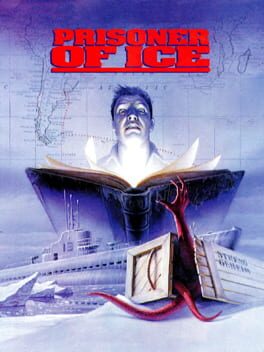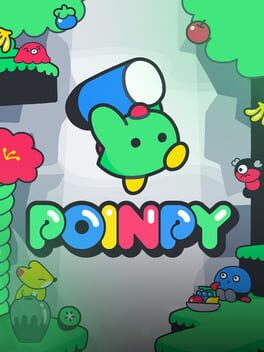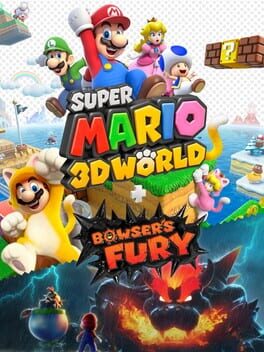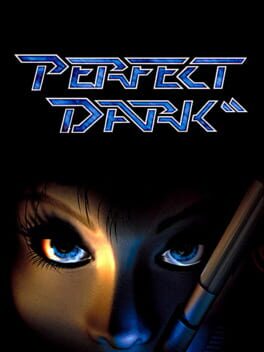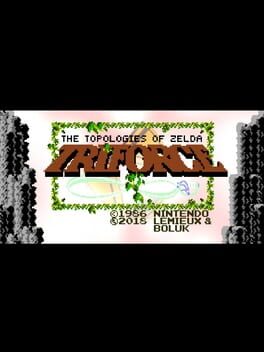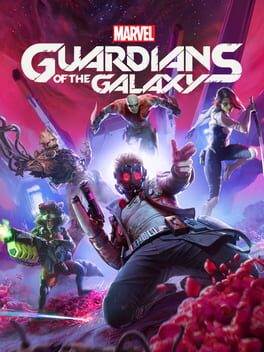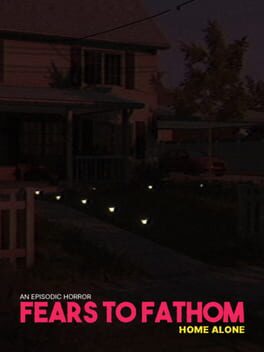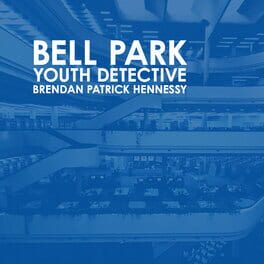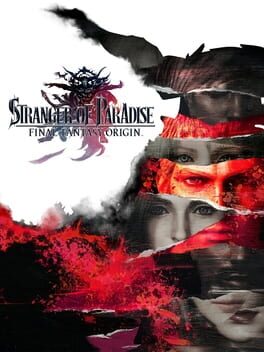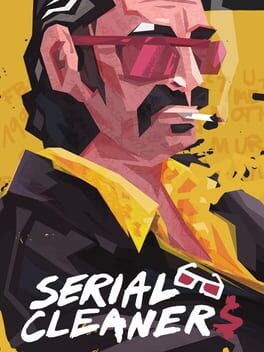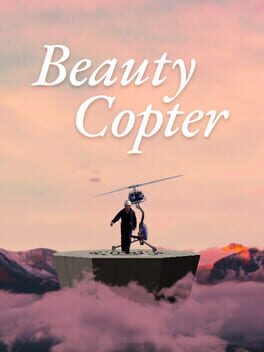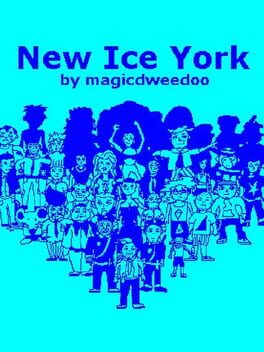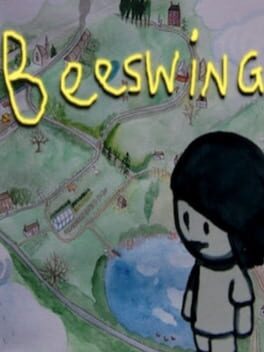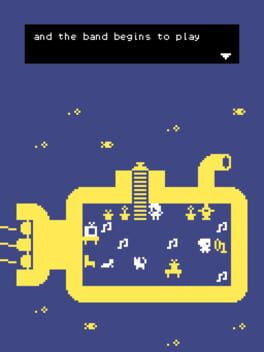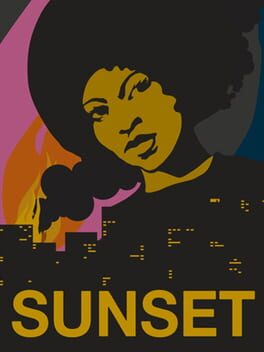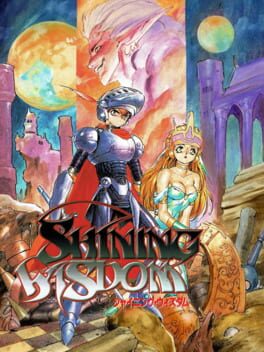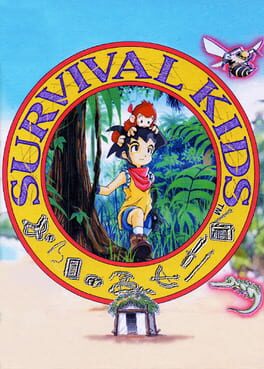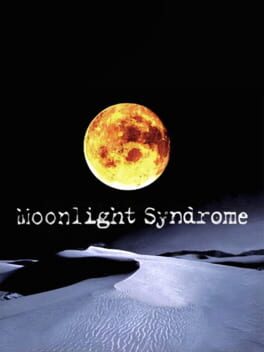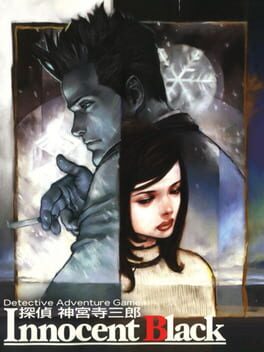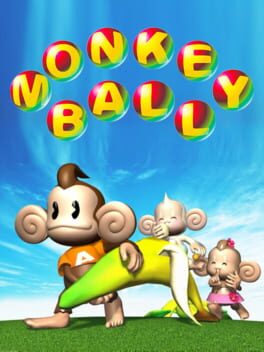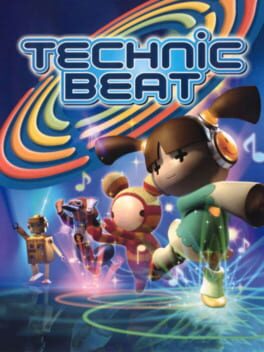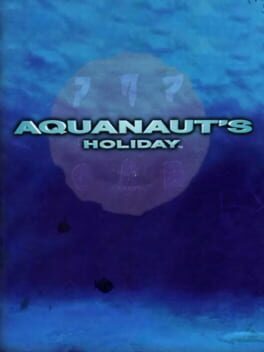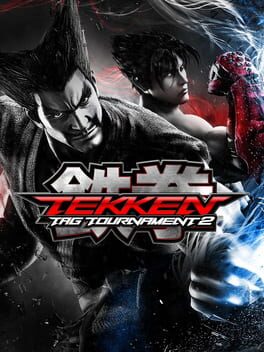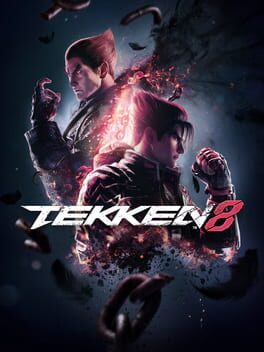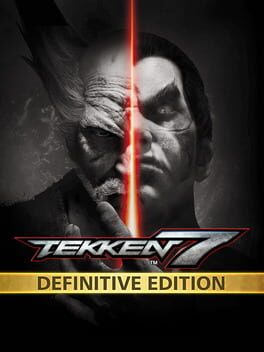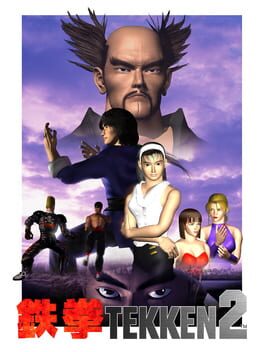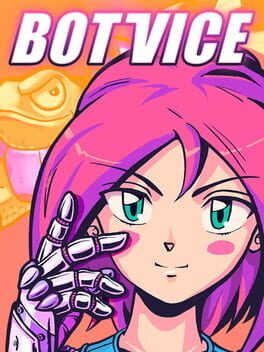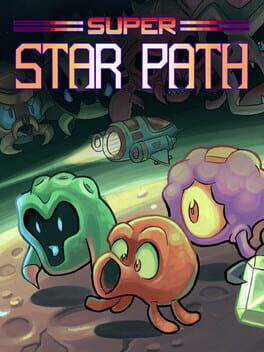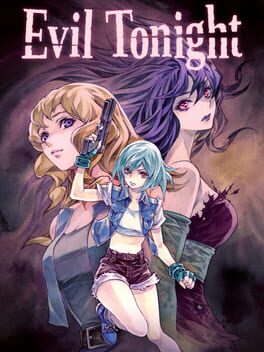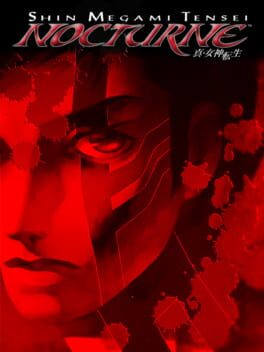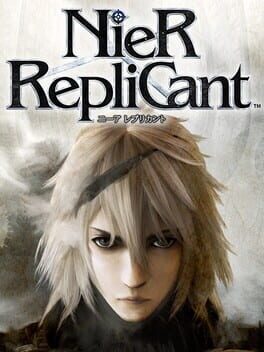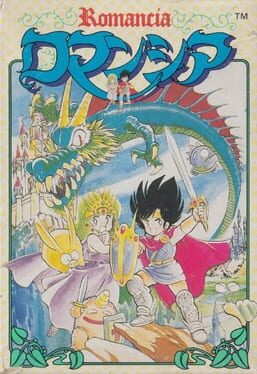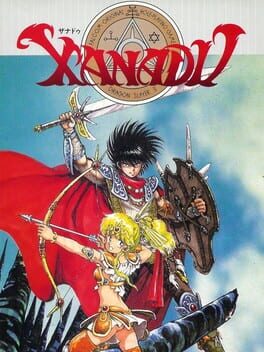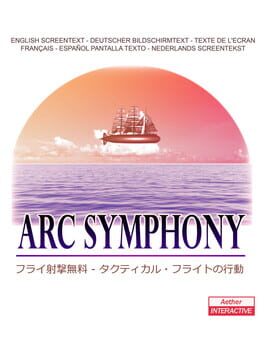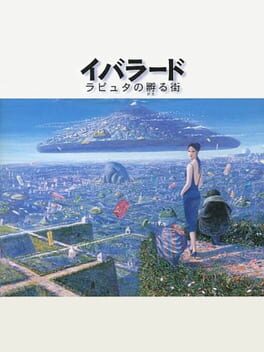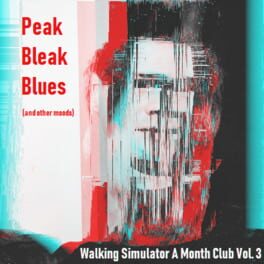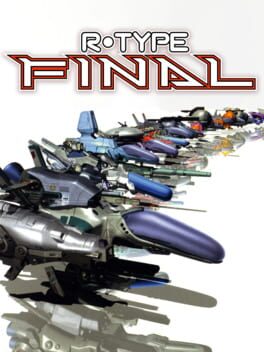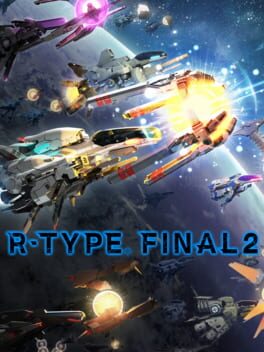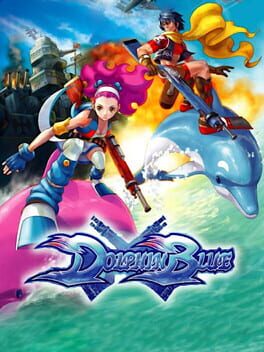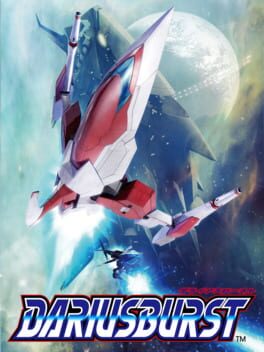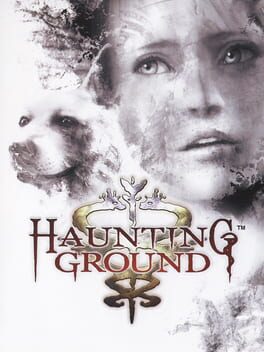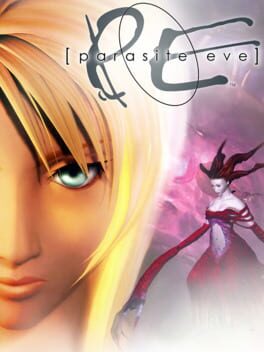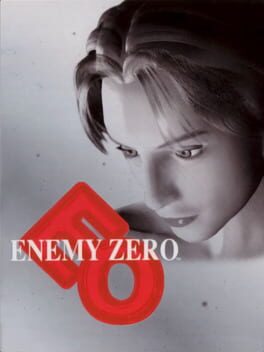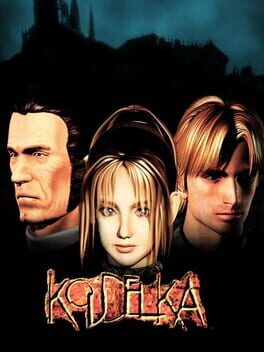Aichancleta
97 reviews liked by Aichancleta
Umihara Kawase
1994
This review contains spoilers
El primer boss, en una sola pantalla lineal: me confundió de camino, me enseñó unas paredes que no podía usar, me mató de 8 formas distintas (mi amiga y yo las contamos), hasta que conseguí ganar. Cuando consigues pasártelo es porque has caído en mil detalles del setting del combate que te puteaban y has tenido que pararte a pensar en como solucionarlo. Has avanzado en el uso de la fisicidad del gancho tanto de manera memorística como de tips para plantearte mejor el uso del gancho antes de lanzarlo. No me pasé aún el juego, pero me pareció un high peak tan grande que quise anotarlo.
Después me puse a mirar vídeos de pros del juego y encontré uno que le ponía nombres a distintos saltos aprovechándose de la tensión de la cuerda, nombres como Wallbased Rocket Jump o Input Buffering, lo cual me pareció bastante accurate.
*Las 8 muertes:
1)muerte al principio por n00b
2)ir a la zona del bonus y no poder volver
3)precipitarme al subir/pasarme con el impulso y chocarse con el culo del boss
4)entretenerme mucho con las ranas/stuneado por las ranas y el boss me da
5)me engancho en el borde pero no se bien volver porque aún no tengo la práctica con la caña y acabo muriendo de alguna manera
7)las ranas caen al agua si las dejo escapar así que me da mientras estoy enganchado
8)algún chapuzón involuntario
Después me puse a mirar vídeos de pros del juego y encontré uno que le ponía nombres a distintos saltos aprovechándose de la tensión de la cuerda, nombres como Wallbased Rocket Jump o Input Buffering, lo cual me pareció bastante accurate.
*Las 8 muertes:
1)muerte al principio por n00b
2)ir a la zona del bonus y no poder volver
3)precipitarme al subir/pasarme con el impulso y chocarse con el culo del boss
4)entretenerme mucho con las ranas/stuneado por las ranas y el boss me da
5)me engancho en el borde pero no se bien volver porque aún no tengo la práctica con la caña y acabo muriendo de alguna manera
7)las ranas caen al agua si las dejo escapar así que me da mientras estoy enganchado
8)algún chapuzón involuntario
Prisoner of Ice
1995
Algo que me sorprendió en su momento jugando este juego hace años y que lo sigue haciendo hoy mientras veo un gameplay es lo bien que casa el estilo de aventura gráfica con Lovecraft. La quietud inexpresiva de los personajes colabora con la falta de elección que tienen muchas veces los personajes lovecraftianos. La única agencia de los personajes en estos juegos es conversacional, reflejando el único nivel en el que sus personajes pueden moverse libremente: el especulativo (el único requerido para llevar a sus personajes a la locura). Cuando llega una cinemática en este juego y el plano se mantiene en el mismo ángulo general con sus personajes reaccionando a lo que vemos, es una sensación mucho más parecida a la angustia original de los cuentos que la que podría lograrse manejando directamente al personaje o en el cine con un plano idéntico pero sin estar nosotros a los mandos. Súmale a eso la ambientación perfecta de este juego, que por desgracia no tiene Shadow of the comet, y tienes una de mis 2 o 3 adaptaciones favoritas de Lovecraft fuera del papel.
Poinpy
2022
This thing is good, but it is also the epitome of this increasingly predominant logic that Nintendo has with its present and its past, a toymaker one, and not a craftsman who cares with affection for his games and ideas put into his creations, rather like that of a luxury company that offers disposable and immediate products with a careful presentation.
Here is the new one of the toy known as "SUPER MARIO 3D WORLD WOHHOHHUHOOO", with improvements that will make you not want to go back to the original Wii U, in fact, they do not want you to, nor will they want you to go back to this version of switch when remaster it again on their next generation of hardware.
This logic extends to the entire game itself because its approach to action, while satisfying on the spot, also reveals how little real thought went into the designers working on such a solid and simple foundation as Super Mario. 3d Land- That game was in good health, but it was addictive like pringles-.
Why is there a multitasking button [Run], [Use Powerup],[Pick Up Player]
[Throw Things/Player] on a controller with so many buttons?
Probably no one thought of it, but in 3DLand it worked, so here too, right?
Yeah, no, the truth is that it doesn't work that well. With so many different power ups that alter the way the game space is operated, objects to throw, enemies that need to be dealt with in different ways, and, most importantly, a multiplayer in which all this is multiplied and also adds the possibility picking and throwing other players to win levels in the (seemingly) funniest and most creative way... One can't rely on a multitasking button, it's just impossible. Because obviously it's not just about the actions you can perform with your character, but how those actions relate to and impact the environment, or in this case -action platforms- what the environment demands of you as a player.
And precisely that, the environment, the levels, the world, Why is this game called 3D WORLD?
Not even the world map, probably the freest interplay of all the level-structured Super Marios, offers a sense of the world. It's a minor detail, and I don't have much problem with this, I think that the sensation of the digital world is achieved through more resources than simple physical literalness, but I also think it illustrates another point that was dealt with on autopilot.
The levels capture very well the texture of super mario in my opinion: color, fluffiness, sound... Joy as a whole.
But also full of ideas that, while creative and enjoyable, are also disposable almost the moment they are presented, more articulated around the mobility/attack variations provided by the Powerups than the jump itself, and that's a problem, because if you don't get the necessary powerup in advance the level design turns out to be a little soft, and that coupled with the problems of the multitasking button leaves some absurdly frustrating moments for a game that, if it had a better interactive layout, would be even easier than 3D LAND. Apart from the moments where the game tries to create a directed action sequence in which we have to fight a boss or stay on a platform on rails while the camera beats us - you go out of frame, you're dead - they make me sick, There is no redemption there, neither here nor in almost any platform game, it is an absurd way of killing pacing.
In the end, I liked the game, and I give it 4/5 because of Bowsers Fury and also because from time to time I actively look for a Toylogic game, that is just plain fun. I will probably come back to this game with friends.
--------------------------------------
I haven't been a Nintendo believer for a decade, but this way of supercharging its sequels with mechanics that born and die in the moment which a level takes place is a super evil company move
"duh, Nintendo is a company"
Yes, but even so I would dare to say that Nintendo has not had its own ideas or approaches since the 80s. Rather, it has offered quite innovative pieces of hardware (Nintendo DS?) to share -or even take advantage of- the ideas of others producing works of studies external or minor that would enrich their own corporate image as well as their catalogs
"well, sure, but Nintendo was always like that deep down"
Here is the new one of the toy known as "SUPER MARIO 3D WORLD WOHHOHHUHOOO", with improvements that will make you not want to go back to the original Wii U, in fact, they do not want you to, nor will they want you to go back to this version of switch when remaster it again on their next generation of hardware.
This logic extends to the entire game itself because its approach to action, while satisfying on the spot, also reveals how little real thought went into the designers working on such a solid and simple foundation as Super Mario. 3d Land- That game was in good health, but it was addictive like pringles-.
Why is there a multitasking button [Run], [Use Powerup],[Pick Up Player]
[Throw Things/Player] on a controller with so many buttons?
Probably no one thought of it, but in 3DLand it worked, so here too, right?
Yeah, no, the truth is that it doesn't work that well. With so many different power ups that alter the way the game space is operated, objects to throw, enemies that need to be dealt with in different ways, and, most importantly, a multiplayer in which all this is multiplied and also adds the possibility picking and throwing other players to win levels in the (seemingly) funniest and most creative way... One can't rely on a multitasking button, it's just impossible. Because obviously it's not just about the actions you can perform with your character, but how those actions relate to and impact the environment, or in this case -action platforms- what the environment demands of you as a player.
And precisely that, the environment, the levels, the world, Why is this game called 3D WORLD?
Not even the world map, probably the freest interplay of all the level-structured Super Marios, offers a sense of the world. It's a minor detail, and I don't have much problem with this, I think that the sensation of the digital world is achieved through more resources than simple physical literalness, but I also think it illustrates another point that was dealt with on autopilot.
The levels capture very well the texture of super mario in my opinion: color, fluffiness, sound... Joy as a whole.
But also full of ideas that, while creative and enjoyable, are also disposable almost the moment they are presented, more articulated around the mobility/attack variations provided by the Powerups than the jump itself, and that's a problem, because if you don't get the necessary powerup in advance the level design turns out to be a little soft, and that coupled with the problems of the multitasking button leaves some absurdly frustrating moments for a game that, if it had a better interactive layout, would be even easier than 3D LAND. Apart from the moments where the game tries to create a directed action sequence in which we have to fight a boss or stay on a platform on rails while the camera beats us - you go out of frame, you're dead - they make me sick, There is no redemption there, neither here nor in almost any platform game, it is an absurd way of killing pacing.
In the end, I liked the game, and I give it 4/5 because of Bowsers Fury and also because from time to time I actively look for a Toylogic game, that is just plain fun. I will probably come back to this game with friends.
--------------------------------------
I haven't been a Nintendo believer for a decade, but this way of supercharging its sequels with mechanics that born and die in the moment which a level takes place is a super evil company move
"duh, Nintendo is a company"
Yes, but even so I would dare to say that Nintendo has not had its own ideas or approaches since the 80s. Rather, it has offered quite innovative pieces of hardware (Nintendo DS?) to share -or even take advantage of- the ideas of others producing works of studies external or minor that would enrich their own corporate image as well as their catalogs
"well, sure, but Nintendo was always like that deep down"
Perfect Dark
2000
Goldeneye 007 was a bridge to a new philosophy of design and direction. but I had always understood that game more as a proto hitman(?)
-Seeing the state of the later fps that based their structures designed on the scripts to lock the player in a "moment to moment" of constant cinematographic linear stimulation, or in a constant return to emulate or restore the boomer shooter again .. I find this game very admirable.
seems to be more dedicated to its gelatinous and exploitative -almost parody- internal logic about how a spy should proceed in a video game, taking into account the most bombastic pop aesthetics and packaging it in a shooter.
-For me it works because it seems to reject to a certain extent the idea of levels as simple arenas or mazes where you can get lost to kill and score points and decides to focus on making the environments seem like places of certain spatial and functional logic within limited possibilities. Environments where gadgets play a tremendous role btw
but at the same time, as I said, the game knows that it wants to be a shooter and
It puts a lot of emphasis so that corners, stairs and doors are always hot spots for firefights in close quarters.
And I think that's the point, the diegetic excuse of the spies takes you away from hellscapes and battlefields to get into laboratories and rooms that replace the labyrinths and arenas of the most past shooters.
-Here I enjoy every shootout that more often than not seems like an archaic Gun-Fu confrontation in which I am vastly superior to my opponents - especially in the xbox360 version-
There's something very well built about Perfect Dark's gunplay that stands out in corner play. Taking cover for yourself, pulling the trigger a couple of times to shoot in a controlled manner at enemies that Joanna Dark targets almost automatically within the frame, reloading with that animation... It all adds up to articulating a fantasy of tactical action that if Holds a moment to moment with room to breathe
-Seeing the state of the later fps that based their structures designed on the scripts to lock the player in a "moment to moment" of constant cinematographic linear stimulation, or in a constant return to emulate or restore the boomer shooter again .. I find this game very admirable.
seems to be more dedicated to its gelatinous and exploitative -almost parody- internal logic about how a spy should proceed in a video game, taking into account the most bombastic pop aesthetics and packaging it in a shooter.
-For me it works because it seems to reject to a certain extent the idea of levels as simple arenas or mazes where you can get lost to kill and score points and decides to focus on making the environments seem like places of certain spatial and functional logic within limited possibilities. Environments where gadgets play a tremendous role btw
but at the same time, as I said, the game knows that it wants to be a shooter and
It puts a lot of emphasis so that corners, stairs and doors are always hot spots for firefights in close quarters.
And I think that's the point, the diegetic excuse of the spies takes you away from hellscapes and battlefields to get into laboratories and rooms that replace the labyrinths and arenas of the most past shooters.
-Here I enjoy every shootout that more often than not seems like an archaic Gun-Fu confrontation in which I am vastly superior to my opponents - especially in the xbox360 version-
There's something very well built about Perfect Dark's gunplay that stands out in corner play. Taking cover for yourself, pulling the trigger a couple of times to shoot in a controlled manner at enemies that Joanna Dark targets almost automatically within the frame, reloading with that animation... It all adds up to articulating a fantasy of tactical action that if Holds a moment to moment with room to breathe
Because in the end the world is a space to solve.
Sometimes with logic, sometimes with perspective, sometimes with force, sometimes by listening.
there is nature, but naturalistic logic is a lie. at least in modern life.
Curiously, puzzling the orientation and twisting the land we walk on -in the shape of a Donut, the industrial shape- the perspective reveals that there were no forests on earth, we made the forests, we imagined the height of that mountain. They suggested us, we accepted.
There are shades between "natural" progression and satisfying progression. we often confuse them.
This is very pessimistic, but I think that what defines us as people is usually the lies and truths that we accept.
Sometimes with logic, sometimes with perspective, sometimes with force, sometimes by listening.
there is nature, but naturalistic logic is a lie. at least in modern life.
Curiously, puzzling the orientation and twisting the land we walk on -in the shape of a Donut, the industrial shape- the perspective reveals that there were no forests on earth, we made the forests, we imagined the height of that mountain. They suggested us, we accepted.
There are shades between "natural" progression and satisfying progression. we often confuse them.
This is very pessimistic, but I think that what defines us as people is usually the lies and truths that we accept.
Pizza Tower
2023
-With the nerves to the limit, but with a smooth movement, justified by the style of animation. I don't know, I see it as a bit contradictory to the crazy and animated world that the game poses
-I haven't played any Wario Land, but here the approach of the double level design (hit and run) in communion with the two possible forms of mobility, until the two collide with each other, is super interesting.
but, there is the problem, that they collide in what I intuit is an impossibility to get rid of their formative references in terms of a "genre", called "the platformers".
The idea of scoring through collecting and other chores at levels that force you to fluctuate between jumping, speed and momentum does not seem very appropriate to me if at the least I fail I have to repeat a sequence of three heights and four platforms, for very funny and schizophrenic that are the crash and fall animations.
Between the seams of the game, a speerun logic almost appears?
I don't see the great Peppino spaghetti being an avatar of total control in chaos, rather I see him suffering from chaos, heck, that's how the protagonist seems to be presented, as someone on the verge of sanity, breaking with everything he knows. crosses.
-So vacuously it has been possible to attribute to Signalis that its structure is a mixture without substance (partially correct, but I don't see it badly for a game whose one of its main reasons is "memory" as a concept) beyond the visual, I think this could perfectly apply to Pizza Tower: the weight, the speed and the alleys and unthinkable traps of Sonic with the framework of Wario Land? (I intuit, I reiterate that I have not played)
But I find another similarity with Sonic: the divergence between character concept and game concept.
you already know
Speed vs Caution in Sonic
Chaos and humor vs Control and some precision in Pizza Tower
Am I the only one who feels this?
-The mixture is quite satisfactory, but why would that be enough?
-usually the internal coherences matter very little to me, and I hate applying the operational sense of the real world, I prefer the expression and the personality, at any cost. but here I find the expression in the same way as some contemporary games that rely entirely on the animations of their characters. And that's not bad at all, it's completely fine but I didn't find a situation where the comedy came from the game design instead of the characters and their animations. It's a bit picky, but I feel the same way I do when I watch one of the new Pixar-like CGI animated movies, with little interest in cinematography and space-time relationships.
I love the energy of this game, but at the same time it leaves me super cold
-I haven't played any Wario Land, but here the approach of the double level design (hit and run) in communion with the two possible forms of mobility, until the two collide with each other, is super interesting.
but, there is the problem, that they collide in what I intuit is an impossibility to get rid of their formative references in terms of a "genre", called "the platformers".
The idea of scoring through collecting and other chores at levels that force you to fluctuate between jumping, speed and momentum does not seem very appropriate to me if at the least I fail I have to repeat a sequence of three heights and four platforms, for very funny and schizophrenic that are the crash and fall animations.
Between the seams of the game, a speerun logic almost appears?
I don't see the great Peppino spaghetti being an avatar of total control in chaos, rather I see him suffering from chaos, heck, that's how the protagonist seems to be presented, as someone on the verge of sanity, breaking with everything he knows. crosses.
-So vacuously it has been possible to attribute to Signalis that its structure is a mixture without substance (partially correct, but I don't see it badly for a game whose one of its main reasons is "memory" as a concept) beyond the visual, I think this could perfectly apply to Pizza Tower: the weight, the speed and the alleys and unthinkable traps of Sonic with the framework of Wario Land? (I intuit, I reiterate that I have not played)
But I find another similarity with Sonic: the divergence between character concept and game concept.
you already know
Speed vs Caution in Sonic
Chaos and humor vs Control and some precision in Pizza Tower
Am I the only one who feels this?
-The mixture is quite satisfactory, but why would that be enough?
-usually the internal coherences matter very little to me, and I hate applying the operational sense of the real world, I prefer the expression and the personality, at any cost. but here I find the expression in the same way as some contemporary games that rely entirely on the animations of their characters. And that's not bad at all, it's completely fine but I didn't find a situation where the comedy came from the game design instead of the characters and their animations. It's a bit picky, but I feel the same way I do when I watch one of the new Pixar-like CGI animated movies, with little interest in cinematography and space-time relationships.
I love the energy of this game, but at the same time it leaves me super cold
In the first hour of the game, there is a script where the ground collapses and the game expects you to fall into a hole. its so sad.
I didn't fall, but the game had a dialogue programmed with groans. The game assumed that you had fallen into the scripted trap.
It is incredible how the AAA pop have appropriated the narrative resources more typical of the indies of the beginning of the last decade. Those that allowed you to explore the space in a more reduced and detailed way, interacting with small objects on a stage, only to end up mixing it with Walkie Talkie sections and Voilà, you already have your cinematographic level.
Actually, an older version of space exploration reduced but exhaustive through the details already existed in the blockbusters since the late 90s (Shenmue? , MGS 2-4 maybe?) but they were never so frequent.
because the exploration can be slightly guided, since the digital worlds are a powerful and wonderful ultra-designed lie... But dictated? no plz
This game drowns you with absolutely all the trends it can afford, leaving no room for thought. grabs you by the neck without conviction, with such a corporate plan. its scary.
I'm on board for narrative-driven pop games (gosh, I love MGS4) but I need A LITTLE bit of authoring.
I didn't fall, but the game had a dialogue programmed with groans. The game assumed that you had fallen into the scripted trap.
It is incredible how the AAA pop have appropriated the narrative resources more typical of the indies of the beginning of the last decade. Those that allowed you to explore the space in a more reduced and detailed way, interacting with small objects on a stage, only to end up mixing it with Walkie Talkie sections and Voilà, you already have your cinematographic level.
Actually, an older version of space exploration reduced but exhaustive through the details already existed in the blockbusters since the late 90s (Shenmue? , MGS 2-4 maybe?) but they were never so frequent.
because the exploration can be slightly guided, since the digital worlds are a powerful and wonderful ultra-designed lie... But dictated? no plz
This game drowns you with absolutely all the trends it can afford, leaving no room for thought. grabs you by the neck without conviction, with such a corporate plan. its scary.
I'm on board for narrative-driven pop games (gosh, I love MGS4) but I need A LITTLE bit of authoring.
Hi-Fi Rush
2023
This game mixes the textual and metatextual sense of spectacle in an admirable way.
Combat aside, it is very little spontaneous, despite being an action game. Everything has its tempo, and that leads to a routine.
Jump here when the obstacle allows it, shoot at this grid target, destroy the wall when the circles say so. Not my ideal adventure.
But
Overthrowing a megacorp requires a plan, and in the capitalist world there is very little room for freedom, for expression, to explode with music and colors... Does it have any aesthetic sense?
Poetry is made through its structure: the idea of visuals that seem to be ripped from a Jetix mid 2000 show in an explosive and colorful action game, driving a happy and carefree protagonist who literally has music in his heart and perceives The world through it, fight against machines and managers through offices and automated production floors brandishing a guitar made of scrap, which, strangely enough, takes on a pristine and ideal appearance the more we fight.
Although of course, it is better if we stick to the tempo that the world marks us (literally).
wow.
A very current dichotomy for those of us who grew up in the 2000s with the new wave of 3d action games -the misnamed """"hack n slash character action game stylisssh""" - with the new music distribution formats through Internet, the anime fansub booms and, above all, with the promises of a better future, social, labor and technological.
It doesn't matter if we look back in the days or to the future, now it sounds like utopia.
-----------------------
- Remake in the form of a mashup is something that attracts me. I see it as more honest reinterpretation than trying to be "the new standard" by holding on to past ideas.
It allows authors/programmers to be recognized as people and establishes links of understanding with them and with a medium without a real canon.
For me, Hi fi Rush is closer to Bravely Default, Tunic, Assault Spy or Spark The Electric Jester 3 than Hollow Knight, Drainus or anything from Team Ladybug because it rips off a piece of time and to articulate a fantasy that goes back to a happy and fleeting time (the truth is that at the governmental and economic level the 2000s were pretty fucked up in their last stretch) not to entrench themselves in them, but to introspect how memory is intermingled with the present. and it only takes a couple of hours of gameplay to understand this.
I guess I see it similar to all those people who say "wow its like ps2 game!"
maybe.
I haven't had a chance to play Astral Chain but I think it's beautiful that Taura ripped a piece of Japanese pop culture from Tokusatsu and Sci-fi anime (misunderstood as "cyberpunk") and made a game where the simple activity of watching and walking the streets is on the same level as the action.
Build their universes based on formative references or young fetishes. Because nowadays, how many adults have time to discover and be as passionate as when they were children? It's not vulgar nostalgia, it's the sad life cycle that some people find themselves in.
-Although I think that the planning of the game and its fiction point to the precarious and inhuman reality in which we live, articulated as a capitalist critique for children (this is good), everything is too scripted. Not condescending, patterned.
Navigating the stages is a tedious low-key and unsophisticated score, while the combat is a good jam session where finding your own rhythm and fitting it in with the world becomes a wonderful thing.
Although to be honest, this part of combat is not something new
At least if, like me, you grew up with Bloody Palace and God Hand while your mother listened to bootleg CDs of Sleater Kinney and Linkin Park at high volume?
I don't know, I don't see this being the game I return to repeatedly with my mixtapes... in a few years maybe
But I like this game, it's not the passion project they're trying to sell us, but it certainly has passion on it.
and bonus points for using Whirring as a killer track.
lovely
https://www.youtube.com/watch?v=a2BUEzdjfpY
Combat aside, it is very little spontaneous, despite being an action game. Everything has its tempo, and that leads to a routine.
Jump here when the obstacle allows it, shoot at this grid target, destroy the wall when the circles say so. Not my ideal adventure.
But
Overthrowing a megacorp requires a plan, and in the capitalist world there is very little room for freedom, for expression, to explode with music and colors... Does it have any aesthetic sense?
Poetry is made through its structure: the idea of visuals that seem to be ripped from a Jetix mid 2000 show in an explosive and colorful action game, driving a happy and carefree protagonist who literally has music in his heart and perceives The world through it, fight against machines and managers through offices and automated production floors brandishing a guitar made of scrap, which, strangely enough, takes on a pristine and ideal appearance the more we fight.
Although of course, it is better if we stick to the tempo that the world marks us (literally).
wow.
A very current dichotomy for those of us who grew up in the 2000s with the new wave of 3d action games -the misnamed """"hack n slash character action game stylisssh""" - with the new music distribution formats through Internet, the anime fansub booms and, above all, with the promises of a better future, social, labor and technological.
It doesn't matter if we look back in the days or to the future, now it sounds like utopia.
-----------------------
- Remake in the form of a mashup is something that attracts me. I see it as more honest reinterpretation than trying to be "the new standard" by holding on to past ideas.
It allows authors/programmers to be recognized as people and establishes links of understanding with them and with a medium without a real canon.
For me, Hi fi Rush is closer to Bravely Default, Tunic, Assault Spy or Spark The Electric Jester 3 than Hollow Knight, Drainus or anything from Team Ladybug because it rips off a piece of time and to articulate a fantasy that goes back to a happy and fleeting time (the truth is that at the governmental and economic level the 2000s were pretty fucked up in their last stretch) not to entrench themselves in them, but to introspect how memory is intermingled with the present. and it only takes a couple of hours of gameplay to understand this.
I guess I see it similar to all those people who say "wow its like ps2 game!"
maybe.
I haven't had a chance to play Astral Chain but I think it's beautiful that Taura ripped a piece of Japanese pop culture from Tokusatsu and Sci-fi anime (misunderstood as "cyberpunk") and made a game where the simple activity of watching and walking the streets is on the same level as the action.
Build their universes based on formative references or young fetishes. Because nowadays, how many adults have time to discover and be as passionate as when they were children? It's not vulgar nostalgia, it's the sad life cycle that some people find themselves in.
-Although I think that the planning of the game and its fiction point to the precarious and inhuman reality in which we live, articulated as a capitalist critique for children (this is good), everything is too scripted. Not condescending, patterned.
Navigating the stages is a tedious low-key and unsophisticated score, while the combat is a good jam session where finding your own rhythm and fitting it in with the world becomes a wonderful thing.
Although to be honest, this part of combat is not something new
At least if, like me, you grew up with Bloody Palace and God Hand while your mother listened to bootleg CDs of Sleater Kinney and Linkin Park at high volume?
I don't know, I don't see this being the game I return to repeatedly with my mixtapes... in a few years maybe
But I like this game, it's not the passion project they're trying to sell us, but it certainly has passion on it.
and bonus points for using Whirring as a killer track.
lovely
https://www.youtube.com/watch?v=a2BUEzdjfpY
13 lists liked by Aichancleta
by Ardwyw_mp3 |
152 Games
by Ardwyw_mp3 |
226 Games
by Ardwyw_mp3 |
90 Games
by Ardwyw_mp3 |
12 Games
by Ardwyw_mp3 |
4 Games
by Ardwyw_mp3 |
105 Games
by Ardwyw_mp3 |
157 Games

